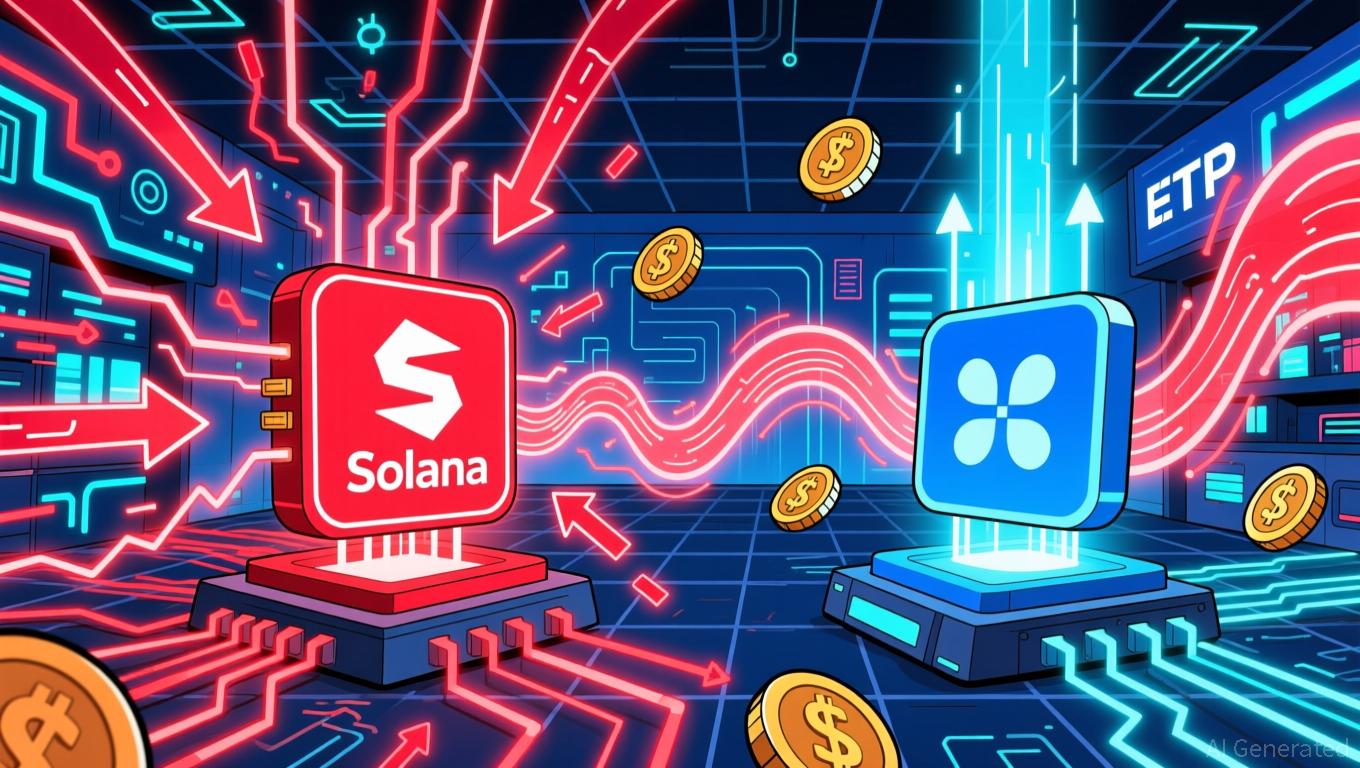CD Yields Reach 4.35% APY—However, Imminent Fed Rate Cuts Urge Savers to Move Quickly
- CDs offer 4.35% APY as of Oct. 24, 2025, but Fed rate cuts risk further declines, urging savers to act quickly. - Smaller banks and online institutions outperform major banks like Chase, offering higher rates due to lower overhead costs. - Fed's 2024-2025 rate cuts reduced federal funds to 4.00%-4.25%, driving down CD yields from 2024 peaks. - Investors balance term lengths and liquidity via strategies like CD laddering while monitoring Fed policy shifts. - Historical context shows current rates exceed e
Certificates of deposit (CDs) continue to attract investors looking for reliable returns, with leading rates reaching 4.35% APY as of October 24, 2025. Still, analysts warn that these attractive yields could decrease further as the Federal Reserve maintains its ongoing rate reductions, which started in September 2025. With the Fed expected to cut rates again in the near future, savers are encouraged to act quickly to lock in current offers, according to
The most competitive CD rate at present—4.35%—comes from Ivy Bank’s three-month CD. Fortune’s tracking shows that smaller regional and online banks are leading the market, often surpassing the rates offered by major institutions. Large banks like Chase, PNC, and U.S. Bank, which focus more on lending and credit card services, typically provide less attractive CD yields, prompting investors to seek better returns elsewhere, as reported by

Changes in CD rates have largely been driven by the Federal Reserve’s monetary policy. After aggressively increasing rates in 2022 and 2023 to fight inflation, the Fed shifted gears in 2024 and 2025. With three rate reductions in 2024 and another in September 2025, the federal funds rate dropped to a range of 4.00%–4.25%, which has led to lower CD yields from their 2024 highs, according to a Fortune article. With two more Fed meetings scheduled for October and November 2025, experts expect rates to fall further, especially if inflation continues to ease, as Fortune has highlighted.
Looking at the bigger picture, current CD rates remain strong compared to recent years. While 4.35% is much lower than the double-digit rates seen in the 1980s, it is a significant improvement over the sub-1% yields that were common in the early 2020s. By historical measures, today’s rates are still attractive, particularly for short-term CDs. The yield curve has flattened, with 12-month CDs now offering the highest average APY, reflecting expectations that rates will drop soon, according to
Investors need to weigh factors like term length, APY, and access to funds. Short-term CDs provide more flexibility but generally pay less, while longer terms can lock in higher rates but reduce liquidity. Many savers use a CD laddering approach—dividing their investment among CDs with different maturities—to balance returns and access. For example, splitting $3,000 into 1-year, 2-year, and 3-year CDs gives annual access to part of the funds while still benefiting from higher long-term rates, as Fortune points out.
It’s also important for depositors to look beyond just the APY. Factors such as minimum deposit amounts, penalties for early withdrawal, and deposit insurance should be considered. Online banks may offer better rates but sometimes require higher minimum balances, while local banks might provide more personalized service. Savers should compare offerings from various institutions and take advantage of promotional rates, which can increase APYs for new customers who meet certain requirements, the Yahoo Finance roundup advises.
The evolving CD market highlights the need for careful financial planning. With the Fed’s future actions still uncertain, investors should keep up with economic news and central bank decisions. For now, there is still an opportunity to lock in favorable rates, but that window is closing, as Fortune notes.
Disclaimer: The content of this article solely reflects the author's opinion and does not represent the platform in any capacity. This article is not intended to serve as a reference for making investment decisions.
You may also like
Ethereum News Update: Amundi’s Integrated Approach Connects Blockchain with Conventional Financial Regulations
- Amundi, Europe's largest asset manager, launched its first Ethereum-based tokenized money-market fund, enabling 24/7 settlements and transparent record-keeping via blockchain. - The hybrid model, developed with CACEIS, combines traditional fund operations with blockchain-based ownership, preserving regulatory compliance while expanding investor access. - Ethereum's dominance in stablecoin and RWA transfers ($105.94B in 30 days) underscores its role in accelerating tokenization, with Amundi positioning it

XRP News Today: XRP ETFs Drive Price Increases, While Solana ETFs Ease Selling Pressure
- XRP ETFs raised $587M in inflows since late November, outpacing Solana's $568M as investors favor altcoins with regulatory clarity and utility. - Bitwise XRP ETF's $107M debut and zero-fee strategy drove momentum, while Solana ETFs faced $156M weekly outflows due to network reliability concerns. - XRP's inflows acted as a "battering ram" pushing prices above $2.27, contrasting Solana's ETFs which merely dampened sell pressure without reversing its decline. - Analysts predict XRP could reach $3 by Decembe

The Federal Reserve's Change in Policy and Its Impact on Alternative Cryptocurrencies Such as Solana
- Fed's 2025 policy shifts, including rate cuts and stablecoin regulations, are reshaping altcoin markets by altering liquidity and risk appetite. - Solana's Alpenglow upgrade (150ms finality, 1M TPS) addresses scalability issues, aligning with Fed's AI-driven infrastructure focus despite network reliability concerns. - Institutional inflows into Solana ETFs ($100M AUM) contrast with retail caution (78% HODLers in red), highlighting divergent risk perceptions amid 30% price corrections. - Divergent ETF flo

Avail's Intent-Driven Nexus Addresses the Issue of Fragmented Liquidity Across Chains
- Avail launches Nexus Mainnet, a cross-chain solution unifying liquidity across Ethereum , Solana , and EVM networks. - The intent-solver model enables seamless asset transfers without technical complexities, streamlining user experiences. - Developers gain modular tools for multichain integration, reducing costs as cross-chain liquidity demand grows. - Nexus abstracts execution layers, offering unified balances and execution while addressing fragmentation challenges. - With $50B+ in cross-chain activity
